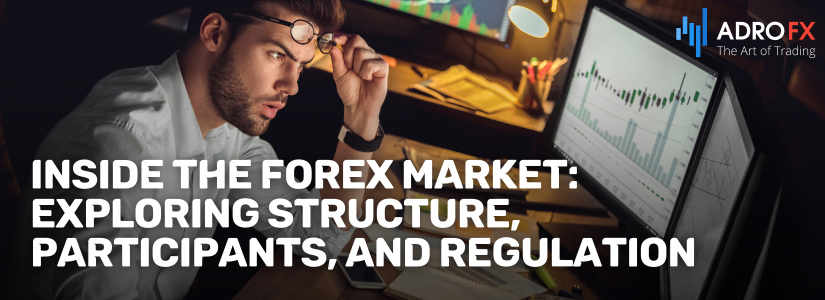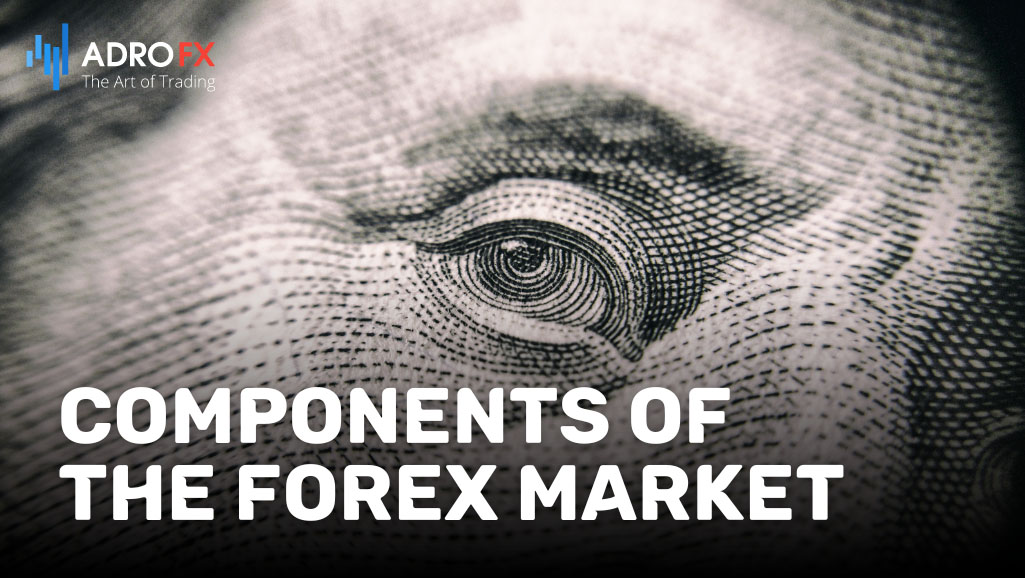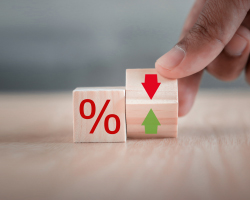Inside the Forex Market: Exploring Structure, Participants, and Regulation

The foreign exchange (forex) market stands as a cornerstone of global finance, serving as the primary arena for currency trading across the world. With a daily turnover exceeding $6 trillion, it dwarfs all other financial markets in terms of sheer size and liquidity.
At its essence, the forex market facilitates the exchange of one currency for another, enabling businesses, governments, financial institutions, and individual investors to conduct international trade and investment. Its significance in the global financial landscape cannot be overstated, as currency exchange rates directly impact international trade flows, capital flows, and economic stability.
Central to understanding the forex market is grasping its intricate market structure. Market structure refers to the framework that governs the behavior of market participants, the dynamics of price formation, and the distribution of liquidity. It encompasses the various components that shape the forex market, including participants, trading mechanisms, and regulatory frameworks.
Grasping the intricacies of market structure is vital for forex traders aiming to adeptly navigate the complexities of currency trading. Through a thorough analysis of market structure, traders can glean valuable insights into market sentiment, pinpoint lucrative trading opportunities, and effectively manage risk. Furthermore, a profound comprehension of market structure equips traders with the flexibility to adapt to evolving market conditions and seize upon emerging trends.
Within this article, we will embark on an exploration of the nuanced landscape of the forex market structure, delving into its various components, participants, and dynamic forces at play. By cultivating a deeper understanding of market structure, traders can bolster their proficiency and confidence in navigating the Forex market with precision and insight.

Components of the Forex Market
The forex market is characterized by a diverse array of participants, each wielding considerable influence in shaping its dynamics and liquidity. Understanding the principal components of the forex market is essential for comprehending its structure and operating effectively.
Retail Traders
These individuals represent the backbone of currency trading, engaging in transactions through online platforms provided by forex brokers. While their trade volumes may be smaller compared to institutional investors, their collective contributions significantly bolster market liquidity.
Institutional Investors
This category encompasses hedge funds, asset managers, pension funds, and other sizable financial institutions that trade currencies on behalf of clients or investment portfolios. Their substantial trading volumes and market clout can sway currency prices and influence market sentiment.
Banks: Banks play a pivotal role in the forex market as participants and intermediaries. They facilitate currency transactions for clients, execute trades for their own accounts, and provide liquidity to the market. Major global banks serve as primary liquidity providers, thereby enhancing the depth and efficiency of the forex market.
Central Banks
These institutions, serving as national monetary authorities, are tasked with formulating and implementing monetary policy. They engage in forex market activities to manage currency reserves, stabilize exchange rates, and intervene during financial crises. Central bank actions and policy decisions wield considerable influence over currency values and market volatility.
The significance of liquidity providers and market makers cannot be overstated in the forex domain. These entities assume a pivotal role in streamlining trading operations and upholding market orderliness. By consistently offering to purchase or vend currencies at stated rates, they uphold uninterrupted liquidity flow and foster effective price revelation. Typically managed by prominent banks and financial establishments, market makers fortify market liquidity by presenting bid and ask prices for currency pairs and executing transactions with counterparties.
The forex market distinguishes itself by its decentralized architecture, a departure from the conventional stock exchanges. Operating around the clock, five days a week across multiple global financial hubs, it embraces a decentralized model. Transactions unfold electronically over-the-counter (OTC), where trades transpire directly between involved parties or via electronic communication networks (ECNs) and interbank trading platforms. This decentralized setup provides traders with unfettered access to liquidity and facilitates rapid trade execution, eliminating the need for intermediaries or central clearinghouses. As a result, the forex market stands as a symbol of unmatched flexibility and inclusivity, catering to traders worldwide, regardless of their geographical whereabouts or time zone.
Understanding Market Participants
In delving into the forex market, it's essential to understand the motivations and strategies that drive its diverse array of participants. Institutional investors, such as hedge funds and asset managers, often execute large trades on behalf of clients or investment portfolios. These sizable orders can significantly impact currency prices, triggering market movements and influencing overall sentiment. Similarly, central banks play a pivotal role in the forex market, intervening to stabilize exchange rates, manage currency reserves, and address economic imbalances. Their actions, such as interest rate decisions or direct currency interventions, can have profound effects on market structure and direction.
On the other hand, retail traders, comprising individual investors and small-scale speculators, bring their own dynamics to the market. While their trading volumes may be smaller compared to institutional players, retail traders collectively contribute to market liquidity and participate in price discovery. Retail traders often rely on technical and fundamental analysis, as well as sentiment indicators, to inform their trading decisions. Sentiment and speculation play a significant role in shaping retail traders' behavior, influencing their perceptions of market trends and potential opportunities. Additionally, social trading platforms and online forums enable retail traders to share insights, discuss trading strategies, and collectively impact market sentiment.
Overall, understanding the motivations and behaviors of different market participants is essential for gaining insights into market dynamics and making informed trading decisions in the forex arena.
Market Liquidity and Volatility
Within the forex market, liquidity denotes the ease with which currency pairs can be traded without causing significant price fluctuations. Optimal liquidity allows traders to swiftly enter and exit positions at stable prices, thereby reducing transaction costs and minimizing slippage. Conversely, low liquidity can result in wider bid-ask spreads and heightened price volatility, posing challenges for efficient order execution.
Liquidity providers, comprising banks, financial institutions, and market makers, play a pivotal role in sustaining market liquidity by continuously quoting bid and ask prices for currency pairs. Through their active participation, these entities ensure the availability of counterparties for trade execution, facilitating seamless order fulfillment and efficient price discovery.
Market volatility in the forex market is influenced by various factors, including economic data releases, geopolitical events, and shifts in market sentiment. Economic indicators such as GDP growth, inflation rates, and employment figures can impact currency values by reshaping expectations regarding monetary policy and economic performance. Similarly, geopolitical tensions, trade conflicts, or geopolitical crises can trigger market volatility by altering investor risk appetite and sentiment, thereby affecting currency valuations.

Market Order Flow and Price Discovery
In the forex market, order flow signifies the continuous influx of buy and sell orders flooding the market at different price levels. The interaction between these orders dictates market prices and influences price movements over time. Through the analysis of order flow, traders can glean insights into market sentiment, pinpoint areas of supply and demand imbalances, and anticipate potential price reversals or breakouts.
Price discovery is the mechanism by which market prices are established based on the combined actions of buyers and sellers. In the forex market, price discovery unfolds through the ongoing matching of buy and sell orders, with prices adapting dynamically to reflect fluctuations in supply and demand. These supply and demand dynamics, shaped by factors such as economic data releases, geopolitical events, and shifts in investor sentiment, propel price movements and mold market trends.
The prevalence of algorithmic trading and high-frequency trading (HFT) has surged in the forex market, bolstering market liquidity and influencing price formation. These automated trading strategies leverage sophisticated algorithms to execute trades swiftly based on predetermined criteria, including price patterns, market trends, and news sentiment. While algorithmic trading can enhance market efficiency and liquidity, it can also exacerbate market volatility, resulting in abrupt price fluctuations, particularly during periods of heightened market activity or news events. Understanding the ramifications of algorithmic trading is crucial for forex traders to adeptly navigate market dynamics and mitigate risks associated with rapid price swings.
Regulation and Market Integrity
The forex market operates under the vigilant oversight of regulatory bodies, ensuring transparency, fairness, and integrity. Authorities such as the Commodity Futures Trading Commission (CFTC) in the United States, the Financial Conduct Authority (FCA) in the United Kingdom, and the Australian Securities and Investments Commission (ASIC) in Australia oversee the activities of forex brokers, enforcing compliance with established rules and regulations. These frameworks impose various obligations on brokers and traders to maintain market integrity and protect investors. Brokers must meet capital adequacy standards, segregate client funds, ensure transparent pricing, and provide comprehensive risk disclosure. Traders are also bound by applicable laws, including anti-money laundering (AML) and know-your-customer (KYC) regulations.
Transparency, fairness, and integrity form the cornerstone of market stability and investor confidence in the forex domain. Transparent pricing mechanisms, efficient trade execution, and equitable treatment of participants foster a level playing field, ensuring equal access to market opportunities. Upholding market integrity requires robust regulatory oversight, effective enforcement, and collaboration among stakeholders to identify and rectify fraudulent or manipulative activities.
In addition to prominent regulatory bodies, international oversight extends to various authorities, including the Vanuatu Financial Services Commission (VFSC). This regulatory entity oversees forex brokers operating from Vanuatu, an offshore financial hub. The VFSC imposes stringent requirements on brokers to uphold market integrity and protect investors. These standards encompass capital adequacy, fund segregation, and compliance with AML and KYC protocols. Through enforcement, the VFSC endeavors to uphold transparency, fairness, and ethical conduct among market participants, preventing malpractice that could undermine market stability and erode investor trust.
The inclusion of the VFSC in the regulatory landscape underscores the global nature of the forex market and the importance of international cooperation in regulatory compliance. Traders are advised to prioritize partnerships with brokers regulated by reputable authorities like the VFSC to mitigate risks and safeguard their investments in the forex market.
Conclusion
In summary, the forex market emerges as a dynamic and multifaceted arena, marked by a rich tapestry of participants, intricate trading dynamics, and regulatory oversight. A comprehensive grasp of market structure is paramount for successful trading, offering invaluable insights into participants' behaviors, liquidity nuances, and price formation mechanisms.
Throughout this discourse, we've delved into the forex market's components, shedding light on the pivotal roles played by retail traders, institutional investors, banks, and central banks. We've elucidated how liquidity providers and market makers bolster market liquidity and examined the myriad factors influencing market volatility.
Moreover, we've underscored the pivotal role of regulatory frameworks in upholding market integrity and safeguarding investor interests. Transparency, fairness, and integrity serve as linchpins for market stability, fostering trust and confidence among participants.
As traders navigate the complexities of the forex market, vigilance, adaptability, and informed decision-making are imperative. By cultivating a nuanced understanding of market structure and adhering to established best practices, traders can refine their strategies and effectively mitigate risks, thereby enhancing their prospects for success.
About AdroFx
Established in 2018, AdroFx is known for its high technology and its ability to deliver high-quality brokerage services in more than 200 countries around the world. AdroFx makes every effort to keep its customers satisfied and to meet all the trading needs of any trader. With the five types of trading accounts, we have all it takes to fit any traders` needs and styles. The company provides access to 115+ trading instruments, including currencies, metals, stocks, and cryptocurrencies, which make it possible to make the most out of trading on the financial markets. Considering all the above, AdroFx is the perfect variant for anyone who doesn't settle for less than the best.










